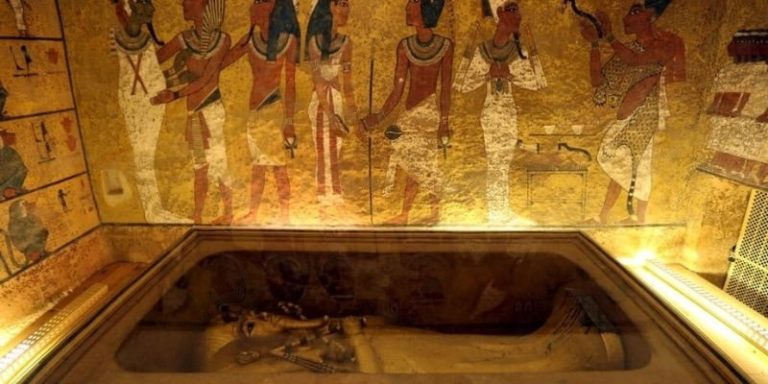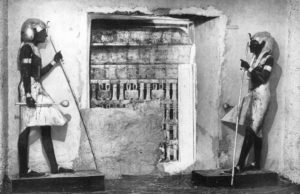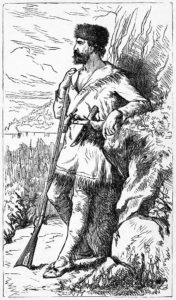This Week in History: October 30 – November 5
The discovery of King Tutankhamun’s tomb.
By: Kelli Ballard | October 30, 2022 | 1238 Words

(Photo by: Universal History Archive/Universal Images Group via Getty Images)
“History is formed by the people, those who have power and those without power. Each one of us makes history.” ~ Anselm Kiefer
November 4, 1922: King Tut’s Tomb is Discovered
King Tut (Tutankhamun) is a very famous historical figure. Not because of the deeds he accomplished, but because the discovery of his tomb gave great insight into the lives of people in ancient Egypt. The boy pharaoh, as he is known, was only nine years old when he became king and just 19 when he died, around 1352 B.C.
When Tutankhamun gained the throne, he reversed the unpopular policies of his father. Despite this, his father’s negative reputation followed him, and he was not as well-liked or respected as he might have hoped.
King Tut is the only pharaoh to be shown in pictures sitting down during physical activities such as archery. This is believed to be because he was often sick and had a clubbed foot that required him to use a walking stick to get around.
Discovering the Tomb of King Tut

(Photo by The Print Collector/Print Collector/Getty Images)
For hundreds of years, the world knew next to nothing about the young pharaoh. That is, until November 4, 1922, when British Egyptologist Howard Carter found the entrance to the chamber where King Tut had been entombed. But soon, a person on the excavation died, and rumors started spreading about a curse on the king’s tomb – that anyone disturbing Tut’s resting place would meet their death. About 12 deaths have been attributed to the curse. The pharaoh’s body had been mummified and well preserved, which only added to the mystery and intrigue – and mummy movies.
The tomb had remained hidden for about 3,000 years until Carter and his team discovered it. On this day, they found the first step of a stairway, and by the next day, they had uncovered the full staircase. By the end of November, a treasury, antechamber, and even the door to the tomb were discovered. Carter was able to make a small breach in the door on November 26, and his first sight was a room full of gold and other treasures. The antechambers had more than 5,000 artifacts which included clothes the pharaoh had worn, chariots, furniture, weapons, and even 130 canes he had used as walking sticks. It wasn’t until a while later that the archeologists actually discovered King Tut’s sarcophagus, with his mummy inside.
Other Notable History Mentions
October 30, 1938: Millions of Americans were frightened and panicked when the radio broadcast War of the Worlds aired. The show was about Martians invading New Jersey and some people thought it was real.
October 30, 1990: A new rail tunnel under the English Channel connected Great Britain with the European continent for the first time since the Ice Age.
 October 31: The holiday known as both Halloween and All Hallow’s Eve.
October 31: The holiday known as both Halloween and All Hallow’s Eve.
October 31, 1940: The Battle of Britain ended. Winston Churchill said of the battle, “Never in the field of human conflict was so much owed by so many to so few.”
October 31, 1941: After 14 years, the Mount Rushmore National Memorial was completed. The memorial features 30-foot sculptures of four presidents’ heads, including George Washington, Abraham Lincoln, Thomas Jefferson, and Theodore Roosevelt.
October 31, 1950: Earl Lloyd became the first black person to play in the National Basketball Association (NBA). He played for the Washington Capitols.
October 31, 1952: In the Marshall Islands, the US detonated its first hydrogen bomb.
October 31, 1968: President Lyndon B. Johnson called for America to stop bombing North Vietnam during the Vietnam War.
November 1: Known as All Hallows Day, this is the day to celebrate those who do not have a special feast day. Among Roman Catholics, it is known as All Saints Day.
November 1, 1776: In California, Mission San Juan Capistrano was founded.
November 1, 1848: The Boston Female Medical School, the first for women, opened in Boston.
November 1, 1950: An assassination attempt on President Harry S. Truman failed.
November 1, 1993: The Maastricht Treaty brought about the European Union.
November 1, 1995: For the first time in South Africa, all races were allowed to participate in a government election.
November 2, 1930: Haile Selassie was crowned the Emperor of Ethiopia. He ended up being the last Ethiopian emperor, as the country was taken over by the communist military group known as the Derg.
November 2, 1947: The “Spruce Goose,” a flying boat owned by eccentric filmmaker and businessman Howard Hughes, took its first and only flight in Long Beach Harbor, California.
November 2, 1962: President John F. Kennedy made an announcement on television during the Cuban Missile Crisis, telling Americans that Soviet Russia was removing its nuclear missiles from Cuba. He said, “the Soviet bases in Cuba are being dismantled, their missiles and related equipment being crated, and the fixed installations at these sites are being destroyed.”
November 3, 1534: King Henry VIII became the Supreme Head of the Church of England when Parliament passed the Act of Supremacy. The Roman Catholic church didn’t allow marriages to be ended at the time (except through death), and the king wanted to become the head of the English church so he could get a divorce from his wife, Catherin of Aragon.
November 3, 1903: Following a revolt, Panama declared its independence from Colombia.
November 3, 1948: Harry Truman defeated Thomas Dewey for the presidency, but a banner headline on the front page of the Chicago Tribune read “Dewey Defeats Truman.”
November 3, 1957: Sputnik II, the world’s first space capsule with a living being, a dog named Laika, was launched by Soviet Russia.
November 4, 1842: President Abraham Lincoln married Mary Todd in Springfield, Illinois.
November 4, 1979: Iranian militants took 90 hostages, including 52 Americans, when they stormed the US Embassy in Tehran, Iran. They were held captive for 444 days, and the event became known as the Iran Hostage Crisis.
November 5: In 1605, the “Gunpowder Plot” was concocted by a group who wanted to bring down the British monarchy due to its persecution of Catholics. The plotters meant to blow up the House of Parliament with King James I in it. Guy Fawkes was put in charge of the explosives, but the plan failed. This day is known as Guy Fawkes Day, celebrating the anniversary of the failure.
Famous Birthdays

Daniel Boone (Photo by: Universal History Archive/Universal Images Group via Getty Images)
John Adams (October 30, 1735) was born in Braintree, Massachusetts. He was the second president of the US and father of John Quincy Adams, the sixth president.
Emily Post (October 30, 1872) was born in Baltimore, Maryland. She wrote books on etiquette and newspaper columns to teach manners.
Admiral William “Bull” Halsey (October 30, 1882) was born in Elizabeth, New Jersey. During World War II, he was the fleet commander in the Pacific.
Daniel Boone (November 2, 1734) was born in Berks County, near Reading, Pennsylvania. Today, he is still one of the most famous American frontiersmen.
James K. Polk (November 2, 1795) was born in Mecklenburg County, North Carolina. He was the 11th president of the US.
Will Rogers (November 4, 1879) was born in Oologah, Indian Territory, which is now known as Oklahoma. He was a humorist and once joked, “All I know is what I read in the newspapers.”
Walter Cronkite (November 4, 1916) was born in St. Joseph, Missouri. A television journalist, he was a leading correspondent during World War II and later an anchorman for CBS Evening News. Today, he is still considered one of the most trusted journalists America has had.
















